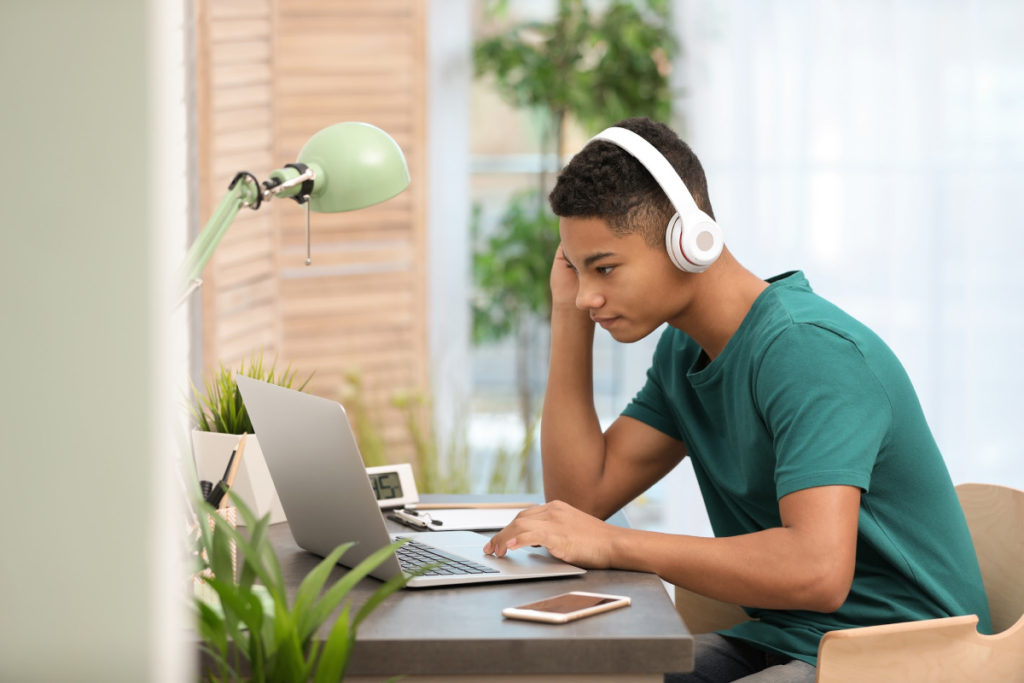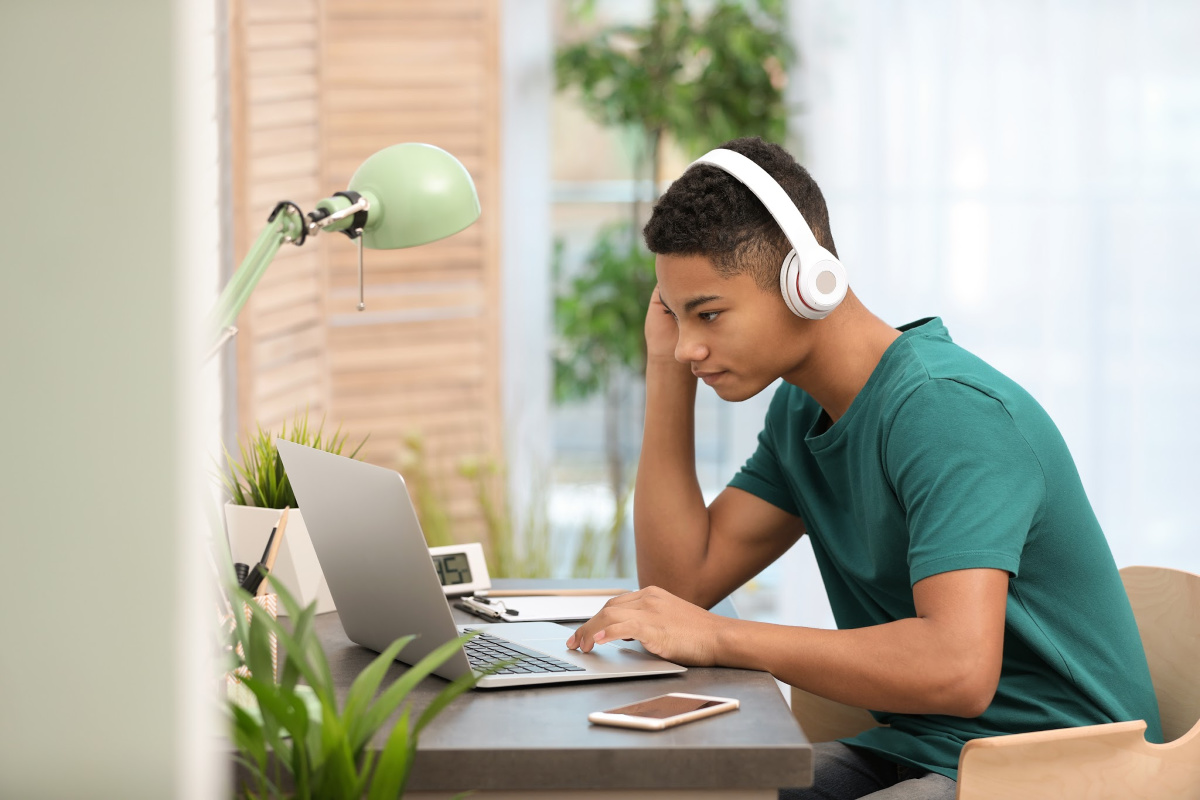
I have to admit that I was shocked when Maribel Gardea said that she was pleased with San Antonio ISD’s special education services during the COVID-19 school closures. Gardea’s son has multiple medical complexities, and she has been an active, vocal advocate. She’s not one to be cheaply placated.
Nevertheless, she was happier with the district than she had been all year. “It’s like they didn’t miss a beat,” she said.
I’ve been watching remote special education services rollout across the country, and on the whole, things have been pretty grim. Districts have struggled to take general education online, and each individualized plan presented a new bundle of variables.
At the same time, technology opens up new possibilities, and for the parents of some students who receive special education accommodations, elements of the new normal are working better than the old normal. As schools prepare for a return to four-wall-eight-hour learning environments, parents have a few suggestions for how to create not just a new normal, but a better one.
Parents Want to Be Involved in the Learning Process
“Communication has always been big for me,” Gardea said. “I’ve been lost for a long time not knowing where my kids are.”
Now, she said, she gets to be a fly on the wall, watching her son’s teacher connect with him via Zoom, delivering real instruction and meaningful interaction. It puts her mind at ease, gives her ideas to try herself, and lets her see her son in a different context.
Gardea had only recently transferred her son to his new school when the closures hit. San Antonio ISD has only two Safe and Optimal Learning Environment (SOLE) classes for non-verbal and medically fragile students, and her first experience had been abysmal, she said. Much of the conflict developed over her right to observe classes.
Parents of vulnerable children—especially those with limited communication—often want to see instruction with their own eyes. They want to know if their child is the same at school as they are at home. This is important when deciding if a child’s developmental challenges are primarily social or cognitive. Parents are gleaning every clue into their child’s unique mind.
The solution would be easy if parents felt that they could trust every teacher, counselor, and school leader to pursue the same deep understanding. But most, like Gardea, eventually find out that this is not the case. Some teachers do want to find the magical points of connection. Others will simply evaluate the child according to the most familiar or comfortable measuring stick . . . for the teacher.
In her new school, Gardea said, she had more confidence in the SOLE classroom teacher, in small part because she was given more access to observe. She liked what she saw—expertise, best practices, connection—but she had to see it to really believe it. Now, as she watches Zoom interactions, she feels more confident than ever before.
“I see it as a way of opening all these doors that were not open before for me,” she said.
Technology Can Be Used to Reduce Distraction
Distraction is one of the primary challenges for dyslexic students like Jasmin Dean’s son. Because his brain does not decode verbal cues—written or spoken—as efficiently as a neurotypical brain, he had to work twice as hard to keep his concentration bolted to text or teacher.
In a classroom, with peers and visual stimuli abounding, Dean’s son often exhausted himself just staying focused, let alone absorbing information.
At home, she said, she can create a distraction-free workspace for the limited time her son is listening to his teacher on Zoom or working on school work.
The actual learning-intensive elements of a remote learning day are far shorter than the traditional school day where social interaction, transitions, and various other activities break up instruction and independent work. Experts advise no more than 1–2 hours for elementary school students, and 3–5 hours for older students.
That’s still a long time to concentrate, and the digital platforms have tools to help her son keep progressing when he might have been tripped up in school. On Zoom, he can see the teacher’s face and screen without any background or peer faces. Mics are muted, so there are no noises to interrupt.
While he works, the apps her son uses have reading aids that deliver the instructions aloud. The prevents his dyslexia from interfering before the exercise even begins, and allows him to conserve some energy for reading-focused work.
These are all accommodations found on his IEP, but the level of individualization afforded by distance learning technology makes them more effective.
Asynchronous Learning Allows Students to Go at Their Own Pace
When Pricilla Pena’s daughter sustains visual focus for too long, she gets splitting headaches, akin to migraines. Because of amblyopia, her daughter’s eyes do not “work as a team,” Pena explained, and the muscle strain is physically painful.
Vision therapy has been working, she said, but school is still physically and mentally exhausting.
Asynchronous learning allows her daughter to take breaks when she needs them. To literally rest her eyes, which rests her brain.
A lot of students struggle with the energy required by the school day—not the content itself. Whether they struggle to focus or are wrestling physical disabilities that divide their attention, it can be difficult to tell what school-based evaluations actually reflect.
The distance component of distance learning is not what any of these parents want to continue. They want the social and emotional learning from peers and trusted adults. Learning from home is also a huge liability for equity. Quiet nooks, internet, and parental flex time are not realities for many, maybe even most, students in the United States—certainly not in Bexar County. However, the ability to replicate those accommodations inside of schools, and to work with parents who want to actively participate, could revolutionize special education in the better normal.
“I think COVID has opened many parents’ eyes,” Pena said, and she finds that there are elements of distance learning that would have been helpful all along. “I hope teachers will embrace it.”

Charter Moms Chats
Watch Inga Cotton’s interview with Bekah McNeel on Charter Moms Chats.
About the Author
Bekah McNeel is a San Antonio-based education writer who focuses on equity, innovation, and social-emotional learning for publications such as The 74. Over the years, we have republished local education coverage from her Hall Monitor site, and last November she wrote for us a four-part series, “Punished, Not Served,” about unfair discipline for students with disabilities.
Read More
- “MTSS: Behavior Support That Comes Before Special Education,” Bekah McNeel, San Antonio Charter Moms, May 13, 2020
- “Decoding the IEP: Parents Learn From a Special Education Advocate,” Bekah McNeel, San Antonio Charter Moms, April 22, 2020
- “Social Distancing Drives Innovation in Special Education Evaluations,” Bekah McNeel, San Antonio Charter Moms, April 8, 2020
- “Punished, Not Served: Texas Data Shows Students with Certain Disabilities Are More Likely to Be Disciplined than Served,” Bekah McNeel, San Antonio Charter Moms, November 22, 2019
